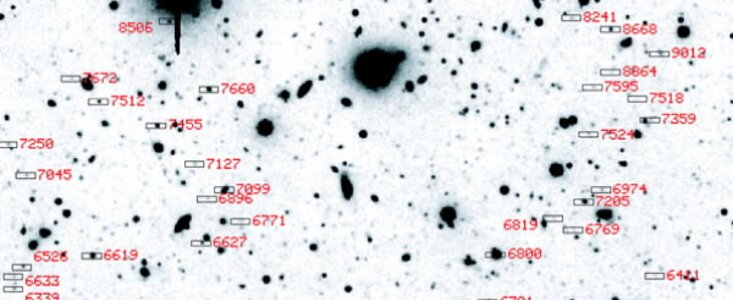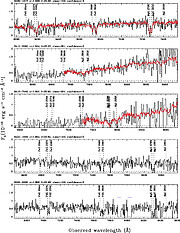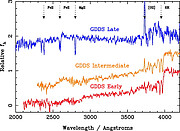The Gemini Deep Deep Survey Opens a New Window Into the Distant Universe of Galaxy Assembly
18 Mayo 2004
May 18, 2004
Using a sophisticated technique called Nod & Shuffle, combined with the Gemini Multi-Object Spectrograph, ultra-deep spectra of several hundred distant, elusive galaxies were captured. These observations by the Frederick C. Gillett Gemini North Telescope help to paint a new picture of the nature and evolution of galaxies some 7 - 10 billion years ago.
Multiple recent discoveries of galaxies at very high redshifts have opened a fascinating window into what happened less than a billion year after the Big Bang.
However, there is a more recent time interval in the past history of the universe that has remained relatively unexplored until very recently. The so-called "redshift desert" corresponds to an era when the universe was between one-third and one-half its present age (between redshifts 1 < z <2). Relatively little is known of the galaxies in this period due to a combination of intrinsically faint galaxy spectra and contamination by atmospheric emissions in the spectral window used to make these observations. The redshift desert is critically important because it is thought to correspond to the period of peak galaxy building.
Using a newly implemented technique at Gemini a study of 301 galactic spectra within the redshift desert has recently been published in The Astronomical Journal by Bob Abraham and a multi-national team of collaborators. Called the Gemini Deep Deep Survey (GDDS), this is the largest and most complete and non-biased sampled infrared-selected spectroscopic survey to probe the redshift desert. To produce a non-biased sample, the objects were selected based on their infrared brightness (K < 20.6) and their red colors.
The team used the Frederick C. Gillett Gemini North Telescope on Mauna Kea and the Gemini Multi-Object Spectrograph (GMOS-N) to observe four widely-separated, 30 arcmin2 fields. The spectroscopic exposure time for each field was about 30,000 seconds. The spectrograph was operated in the Nod & Shuffle mode that enables the removal of contamination by the earth's atmospheric luminescence to a high degree.
The signal-to-noise of the spectra in the GDDS proved to be sufficient to distinguish old stellar populations (dominated by F-stars) from post-starburst systems (dominated by A-type stars) and reddened starburst regions with flat spectra and strong interstellar lines.
Approximately 15% of the galaxies observed in the GDDS fields show spectra dominated by old stellar populations. The fraction with some signatures of evolved stars is 24%. Galaxies showing intermediate age features account for 35% of the sample, 27% appear to be dominated by starburst populations. The authors were unable to assign any spectral classifications to 12% of the sample. The fraction of galaxies with evidence of old population peaks at z ~ 1 and falls off steeply at higher redshifts.
Details are presented in the paper "The Gemini Deep Deep Survey. I. Introduction to the Survey, Catalogs and Composite Spectra", by R. G. Abraham, K. Glazebrook, P. J. McCarthy, D. Crampton, R. Murowinski, I. Jørgensen, K. Roth, I. M. Hook, S. Savaglio. H.-W. Chen, R. O. Marzke and R. G. Carlberg, The Astronomical Journal, vol. 127, 2455-2483, 2004 May. Four additional papers on the GDDS have, or are planned for publication in Nature and The Astrophysical Journal. These future papers will discuss the astrophysical results and significance of the GDDS findings.
See for example "The Gemini Deep Deep Survey: III. The Evolution of Galaxy Stellar Masses", by Glazebrook et al.




